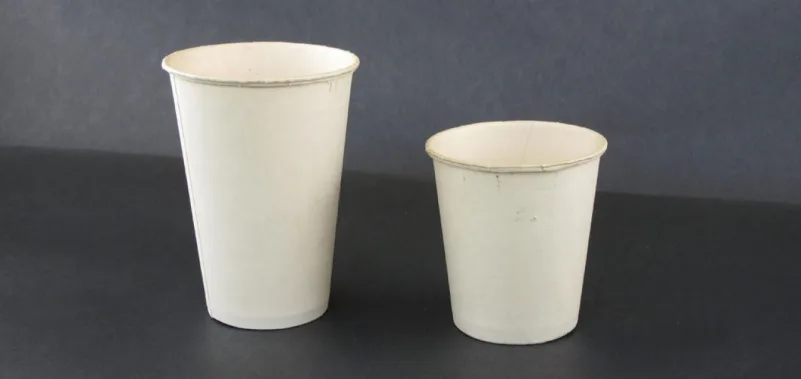Vestis virum facit. (Clothing makes the man.) —Desiderius Erasmus, Adagiorum chiliades (1520)
by BRENTON GROM // December 2015
© Brenton Grom 2015
There was a time in the nineteenth century when, as Erasmus once put it, clothes really did seem to make the man. As industry expanded and commercial firms swelled and multiplied, young men arrived in cities by the thousands to take up jobs as clerks. They balanced ledgers, penned correspondence, sold goods, copied documents, and performed all manner of non-manual labor. And they did so in the uniform of the commercial man: trousers, waistcoat (what we now call a vest), a sack coat (a blazer or suit coat), shirt and tie, and, most quintessentially, a stiff white collar and matching pair of cuffs. Indeed, clerks were the original “white-collar” workers.

Advertisement for Electric Lustre Starch. Laundry starch not only stiffened shirts; it gave them an electrostatic charge that repelled dirt. And as this marketing illustration points out, starching and ironing left fabrics with a smooth and lustrous sheen. The Century Illustrated Monthly Magazine, October 1890.
To put on a collar at all was a new venture for many clerks, especially those drifting in from farms or branching out from families of artisans. Collars were for a class of people who did not sully themselves with manual toil or, for that matter, require the freedom of bodily motion it entailed. They were also for those who had the means to maintain them. Washing, starching, and ironing was a laborious ordeal, and it required one of three assets: a wife or female relative with sufficient time, a housemaid, or the budget to afford commercial laundry services. By the 1830s, commercial laundries were the most efficient means of washing and starching men’s shirts, but for young men on meager salaries, the cost was still a burden.
The requirement that clerks wear suit coats, which covered most of the upper body, meant that shirts could be worn more than once between washings. But cuffs, collars, and bosoms (the shirt-front just below the collar) were still visible, and when they were soiled, others would know. Two basic solutions came to light. One was to detach collar and cuffs from the body of the shirt, so that they could be laundered or replaced individually. Early models had long laces that wrapped around the neck and a neckband on the shirt, but these were cumbersome and sometimes came undone. Later collars fastened to the shirt body with button studs or hooks.

Men’s dress shirt advertisement. Matching cuffs are detached and pictured alongside the body of the shirt. The bosom was attached to the shirt in this instance, and a white detachable collar was sold separately. Sears, Roebuck, and Co., Catalogue no. 104, Fall 1897.
Another strategy was to find alternative materials that would put off the onus of washing, starching, and ironing for good. Strange as it may seem, the 1860s saw experimentation with collars made from flexible steel, and the 1880s ventured into celluloid plastic—both of which could be wiped clean. But the first and most enduring solution involved making collars and cuffs from some kind of stiff paper. Unlike any other linen substitute, paper shirt components were neither washed nor wiped: they were simply worn until soiled and then discarded.

Reverse side of a trade card advertising celluloid shirt components, 1880s. Cleaning them was as simple is wiping with soap and water. (Courtesy of the Trustees of the Boston Public Library, Print Department)
Disposable collars were both a solution and a problem. They were suitably cheap, but could they be made sufficiently strong? How about fashionable? And while comfort was never quite the point of starched linen collars, how much chafing or rigidity should a man in cardboard expect to tolerate? At bottom, paper collars put the markers of high status within reach of a down-market crowd. But what this meant, and to whom, would need sorting out.
As disposable objects go, paper shirt components were an unusual genre. This project tracks their rise and fall, exploring the material, commercial, and social forces that shaped their existence. Click on each section heading to learn how paper collars and cuffs developed, who wore them, and what they meant in a rapidly changing society:
I. Slaves, Loafers, and Revolutionaries // Clerks and Their Collars
II. Style and Substance // The Look and Feel of Paper
III. The Age of Paper // Pulp, Patents, Machines, and Markets
IV. Paper-Collar Gentility // The Sham of Disposability
V. White Collars, Black Bodies // Neckwear in the Racial Imagination
VI. Off the Cuff // The Twilight of Paper Collars, Cuffs, and Bosoms
